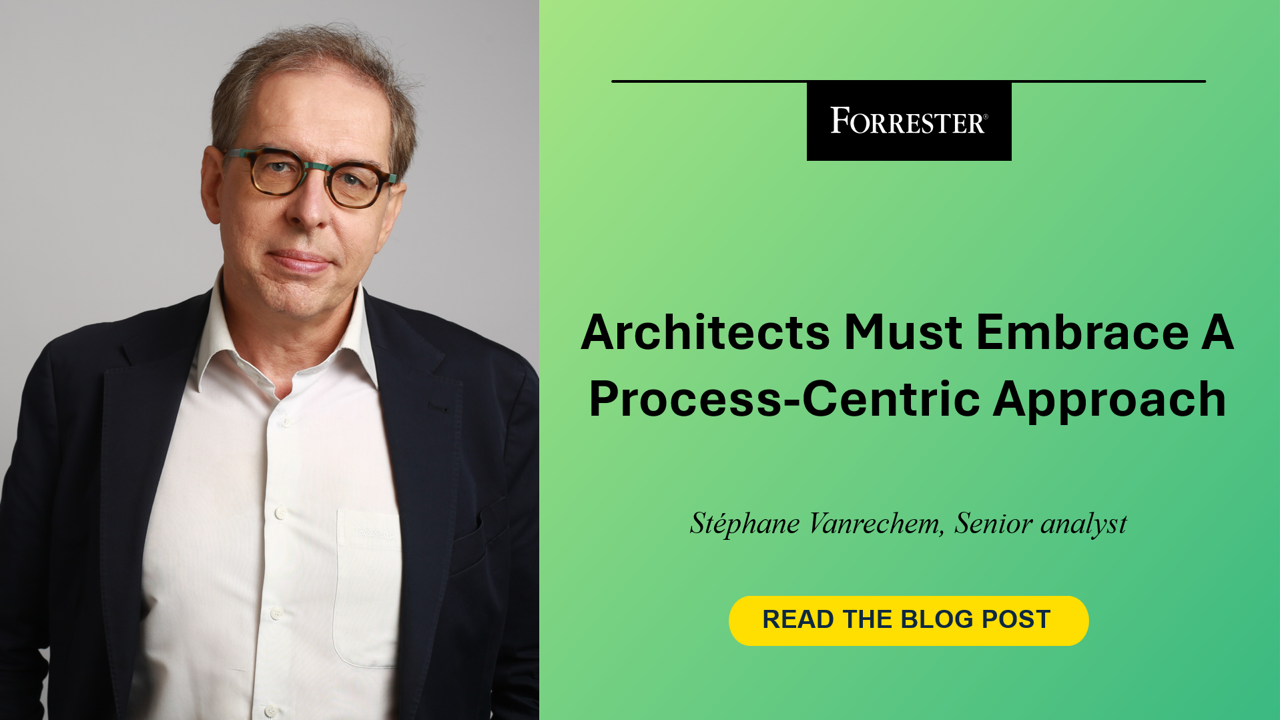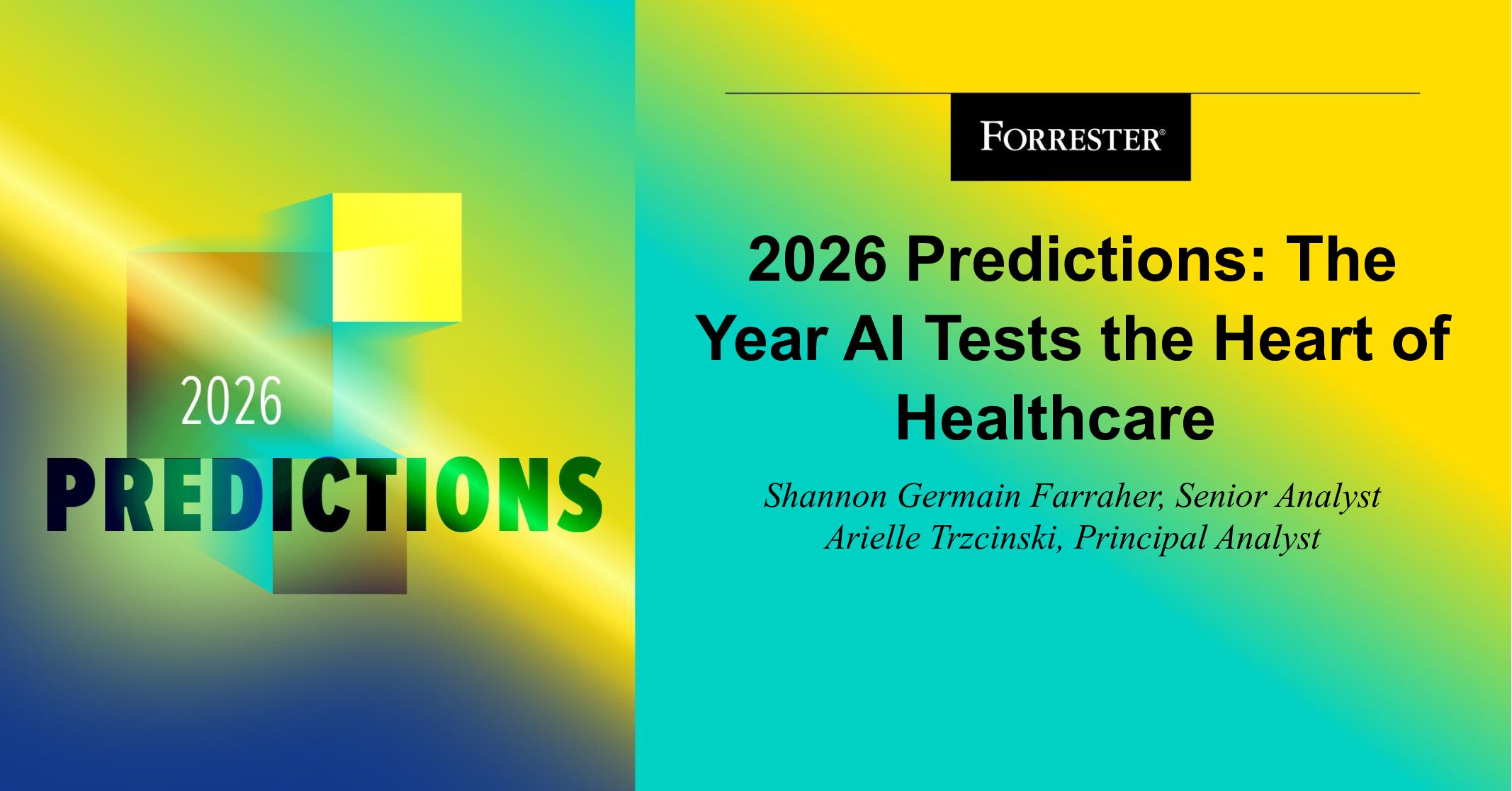Customer journeys, value streams, and day-to-day processes are where value is created — or lost. Yet most enterprise architecture (EA) teams still optimize IT systems in isolation — disconnected from the business outcomes they’re meant to support. Generative AI (genAI) is now automating decisions at unprecedented speed: EA must pivot from system-centric to process-centric.
Why This Pivot Is Urgent
Most EA teams struggle for sponsorship because their impact is hard to see outside IT. Focusing on end‑to‑end processes changes the conversation. Architecture becomes directly linked to cycle time, straight-through processing, and experience metrics that business leaders already monitor. It also puts architects into the flow of work — where fragmented optimization, resistance to change, and underleveraged process tools slow execution.
At the same time, the operating context is shifting fast. GenAI is raising expectations for autonomous, graph‑aware IT operations (see the blog post, The Graphic Future Of IT Management). Agentic AI is coming to service management (see the blog post, Let The Service Management Agentic AI Race Begin). And high‑performance IT depends on three principles — alignment, trust, and adaptivity — which benefit when EA’s unit of analysis is the process, not the platform (see the blog post, Technology Leaders Deliver Significantly Stronger Business Outcomes With High‑Performance IT).
Six Moves To Build A Process‑Centric EA Practice
Through our research with EA leaders, we identified six structural levers that separate process-centric practices. These levers address the measurement, funding, capability, and culture gaps that keep architecture invisible to the business.
Tie architects’ goals to process outcomes, not deliverables. Shift performance discussions from “Did we publish the reference architecture?” to “Did we reduce lead time and rework in this value stream?” Use a concise set of shared KPIs — such as cycle time, straight‑through processing percentage, and Net Promoter Score℠ (NPS) where applicable — and highlight them in quarterly reviews. For a measurement refresh that resonates outside IT, borrow from the report, Vision: Measure Digital Success And Drive Profitable Growth.
Bake process centricity into governance and portfolio decisions. Prioritize funding for work where value flows. Channel demand, sequencing, and risk decisions through the lens of value streams and processes, not just applications. For a macro view of where to integrate tooling and data, use the Forrester IT Management Systems Architecture to align portfolio, AIOps, FinOps, and risk with a common core of process‑relevant data. Pair that with insights from the blog post, CIOs: Get Tech Sprawl Under Control, to collapse redundant platforms that confuse ownership and dilute incentives.
Build capabilities such as process mining, modeling, and simulation. Don’t stop at mapping — enable architects to mine current states, simulate “what if” scenarios, and implement change using telemetry that closes the loop.
Democratize process improvement by making architects facilitators. Create shared ownership with business ops, customer experience, and product teams via value‑stream mapping, Kaizen‑style events, and evidence‑based prioritization. To scale participation and keep knowledge fresh, combine knowledge management with genAI. The goal? Faster learning cycles, better change stories, and less resistance.
Use genAI to accelerate discovery, design, and optimization safely. GenAI can translate text into business process model and notation drafts, propose controls, and summarize telemetry. AI agents can surface bottlenecks or trigger runbooks (i.e., foster process automation). Ensure governance with clear guardrails — including prompt libraries and retrieval-augmented generation based on curated process knowledge — and read the blog post, Generative AI And Knowledge Graphs: A Match Made In Heaven.
Celebrate outcomes with recognition, showcases, and awards. Recognize architecture teams that improve process KPIs and reduce friction. Advertise the achievements that will translate into business growth during quarterly business reviews or town halls.
You’ll find a wealth of information with decisive quotes from users and vendors to begin your journey toward the future of the enterprise architect’s job. Please read the report, Architects Must Embrace A Process-Centric Approach, to find out how to enable business transformation with your EA practice.
If you have more questions and would like to book a guidance session, please submit a request or reach out to your account team.
























